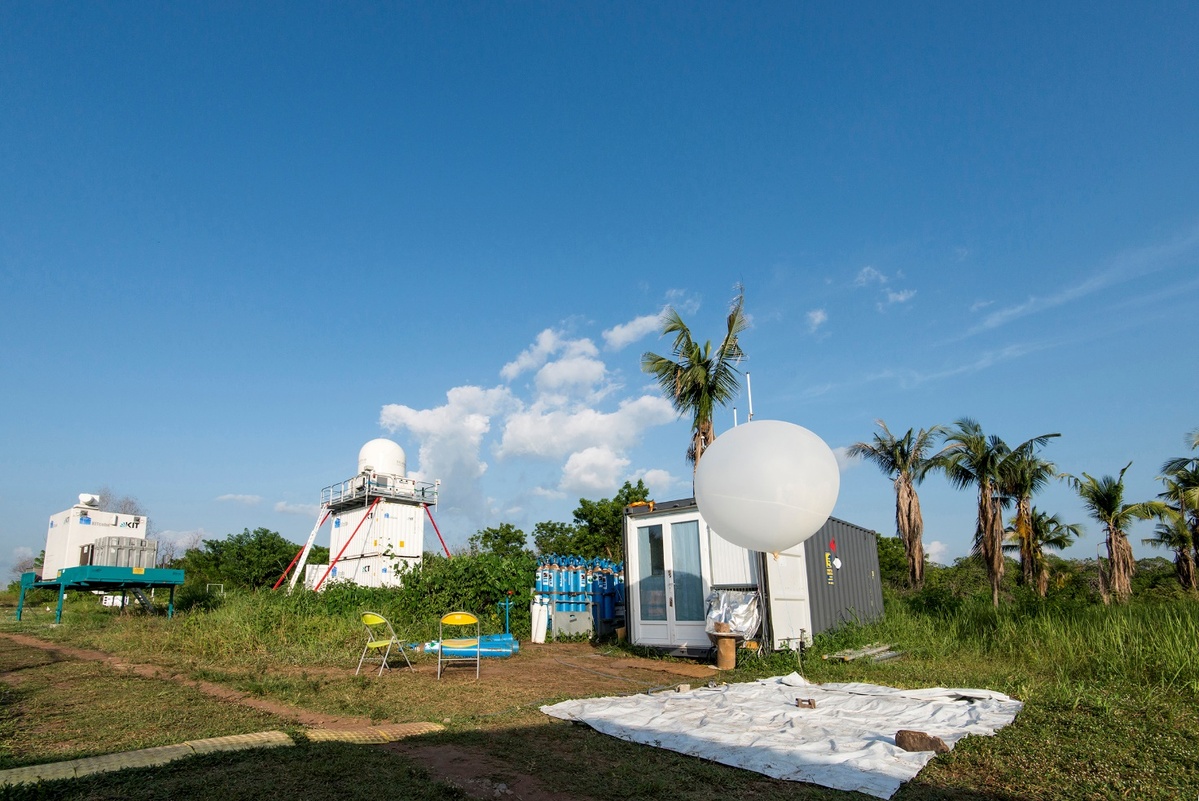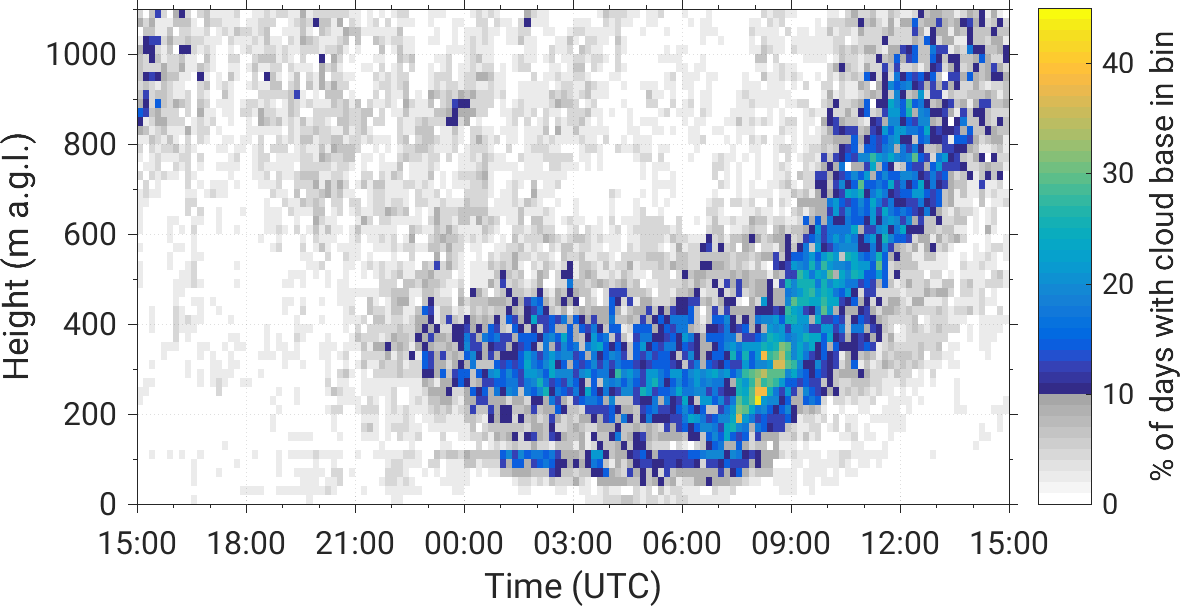The enigma of low-level clouds over southern West Africa
A unique, high-quality data set was obtained during the DACCIWA (Dynamics-Chemistry-Cloud Interactions in West Africa) ground-based field campaign with the mobile platform KITcube employed in summer 2016 at the Savè supersite in Benin in southern West Africa. A synergetic use of in-situ and remote sensing observations allowed the detailed investigation of the effect of low-level clouds (LLC) on the boundary layer conditions and the identification of controlling processes and factors for LLC formation.
During the 7 weeks of the campaign, a large day-to-day as well as intra-night variability of the vertical extent and onset times of LLC was observed, including several LLC-free nights. The conditions in the atmospheric boundary layer over southern West Africa during the monsoon season are typically dominated by a south-westerly monsoon flow and an embedded nocturnal low-level jet (LLJ). In a recent publication a comprehensive overview of the conditions related to the LLC including their formation, maintenance and tansition to convective clouds is given [1].
The first detailed observational analyses [2,3] of the complete diurnal cycle of the nocturnal LLC and the processes leading to their formation, maintenance and dissolution over southern West Africa enhance our understanding on how and why these clouds form. The analyses reveal that atmospheric conditions during LLC cases can be divided into up to five different phases, namely the stable, jet, stratus fractus, stratus and convective phase. Each of the nocturnal phases exhibits typical conditions in the atmospheric boundary layer: the stable phase is characterized by a surface inversion which forms after sunset when the horizontal wind speed in the Monsoon layer is weak. The jet phase starts with the arrival of the Atlantic inflow from the Gulf of Guinea during which a LLJ wind profile and differential horizontal cold air advection are prominent. Once saturation is reached LLC form either as stratus or stratus fractus leading to an upward shift of the LLJ axis [3].
The detailed analysis of a typical case reveals that the effect of horizontal cold-air advection, related to the Atlantic Inflow, has the dominant role on the observed strong cooling of -1.2 K per hour, which causes the increase of relative humidity at the rate of 6 % per hour and, consequently, the formation of LLC. After the LLC form, turbulent mixing is considered to be an important factor leading to the cooling below the cloud base, while strong radiative cooling at the cloud top with a rate of approximately −2 K per hour helps to maintain thick stratus. In the morning, surface heating causes the vertical divergence of the sensible heat flux and, consequently, continuous warming of the CBL, lifting of the cloud base and dissolution of LLC [2]. The analysis of 11 LLC nights confirms the decisive role of horizontal advection and turbulent mixing on the cooling in the atmospheric boundary layer preceding the LLC formation. On the average, about 50 % of the cooling are caused by horizontal advection and 20 % can be explained by turbulent mixing [3].
| Figure 2: Distribution of cloud-base height occurrence during the whole 48 days period at Savè supersite |
[1] Kalthoff, N.; Lohou, F.; Brooks, B.; Jegede, G.; Adler, B.; Babić, K.; Dione, C.; Ajao, A.; Amekudzi, L. K.; Aryee, J. N. A.; Ayoola, M.; Bessardon, G.; Danuor, S. K.; Handwerker, J.; Kohler, M.; Lothon, M.; Pedruzo-Bagazgoitia, X.; Smith, V.; Sunmonu, L.; Wieser, A.; Fink, A. H.; Knippertz, P. 2018: An overview of the diurnal cycle of the atmospheric boundary layer during the West African monsoon season: Results from the 2016 observational campaign. Atmospheric Chem. Phys., 18, 2913-2928.
[2] Babić, K.; Adler, B.; Kalthoff, N; Andersen, H.; Dione, C.; Lohou, F.; Lothon, M.; Pedruzo-Bagazgoitia, X. 2018: The observed diurnal cycle of nocturnal low-level stratus clouds over southern West Africa: a case study. To be submitted to Atmos. Chem. Phys.
[3] Adler, B.; Babić, K.; Kalthoff, N.; Lohou, F.; Lothon, M.; Dione, C.; Pedruzo-Bagazgoitia, X.; Andersen, H. 2018: Nocturnal Low-Level Clouds in the Atmospheric Boundary Layer over Southern West Africa: an Observation-based Analysis of Conditions and Processes. To be submitted to Atmos. Chem. Phys.
[Working group: Land Surfaces and Boundary Layer]


